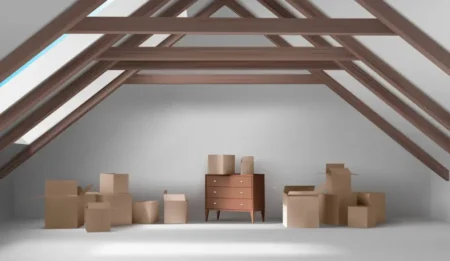 Most people never think about their roof until it leaks. It’s just there — silent, dependable, invisible. But the truth is, the space above your head holds more influence over your comfort and health than almost any other part of your home.
Most people never think about their roof until it leaks. It’s just there — silent, dependable, invisible. But the truth is, the space above your head holds more influence over your comfort and health than almost any other part of your home.
The roof and attic aren’t just protection from weather. They’re part of your home’s living system — the lungs, the insulation, the shield, and sometimes, the forgotten memory room.
The Roof: More Than Shelter
A good roof does more than keep rain out. It regulates temperature, controls moisture, and even affects the air quality inside your house. When the roof is healthy, the whole structure breathes properly. When it’s not, small issues turn into expensive headaches fast.
A tiny crack or loose shingle doesn’t just let in water — it lets in air. That air carries humidity, dust, mold spores, and heat. Over time, insulation clumps, wood swells, and energy bills rise. The problem isn’t just a leak; it’s imbalance.
Most homeowners see roofs as barriers. In reality, they’re bridges — between inside and outside, heat and cold, dryness and humidity. When they’re built or maintained right, you feel it in ways you don’t even notice. You sleep better, your heating system works less, and your home simply feels stable.
The Forgotten Space Between
Then there’s the attic — the in-between world most people ignore. For many, it’s just a storage zone for old boxes and forgotten furniture. But the attic has a quiet role in how your home feels day to day.
If it’s sealed too tightly, heat and moisture get trapped. If it’s too open, cold air rushes in. Either way, the balance of your whole home shifts. Suddenly, you’re turning the thermostat higher in winter, fighting damp air in summer, or dealing with unexplained drafts and smells.
Good attic ventilation works like lungs. It lets the house exhale what it doesn’t need — heat, moisture, stale air — and breathe in what it does. When that balance breaks, everything below starts to suffer.
Even the quiet hum of your HVAC system depends on that space working properly.
The Emotional Side of “Up There”
There’s also something poetic about the attic — it’s the place where houses keep their memories. You might not visit often, but it holds the scent of wood and dust, the sound of rain on the roof, the echo of seasons passing.
In older homes, attics have character — beams darkened by time, sunlight through cracks, air that feels different. They remind you that a house isn’t just walls and floors; it’s a body with a heartbeat.
When you take care of that space, you’re not just protecting insulation or shingles — you’re preserving the soul of the building.
Modern Problems Above
Today’s homes face new challenges. Climate change brings harsher weather, and extreme temperature shifts stress roofing materials. Insulation that worked twenty years ago might now be outdated. Ventilation systems built for cooler climates can trap heat in warmer regions.
Technology helps, but it also hides problems. Smart thermostats and energy-efficient windows make homes feel perfect — until the roof fails. Then everything starts unraveling fast.
Regular inspections, even once a year, catch the things you can’t see: slow leaks, sagging beams, poor airflow. It’s boring maintenance, but it saves thousands later.
The Cost of Forgetting
People spend money on interiors — new kitchens, floors, décor — while the roof quietly ages above them. Then one storm arrives, and everything they’ve invested in ends up at risk.
The irony is that roofs and attics don’t need much attention — just a bit of respect. Clearing gutters, checking seals, making sure insulation stays dry. It’s not glamorous, but it’s the difference between comfort and chaos.
Ignoring what’s above you is easy because you rarely see it. But the house feels it every day.
A Space Waiting to Be Reclaimed
There’s also beauty in rediscovering the attic. In many homes, that space can be transformed — not into a showroom, but into a quiet refuge. A reading corner, a studio, a small guest room. It already has the charm — the light through the roof beams, the sense of height and distance.
When you bring it back to life, you’re not just renovating space; you’re reconnecting with your home’s history. The attic becomes more than storage — it becomes story.
Picture Credit: Freepik
